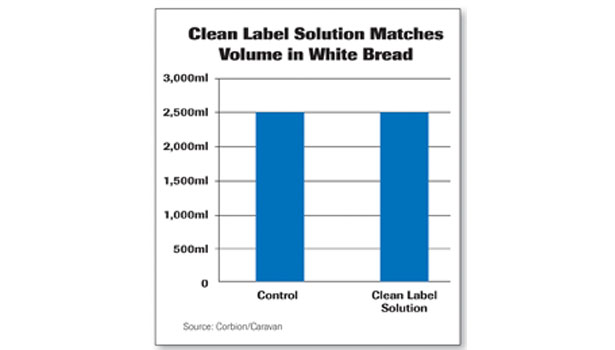While there is no actual definition for “clean label,” clean label products generally give consumers an easy-to-understand ingredient statement that does not bring questions on what is included in a food. Perceptions vary, but for most consumers, clean label involves the fewest number of ingredients and nothing harmful or overly processed.
Gina Norman, scientist for Corbion/Caravan, in her 2013 Prepared Foods’ R&D Seminar titled “Clean Label Solutions for Bread Systems,” explained: “Due to a lack of definition of the ‘natural’ category, consumers tend to look beyond the package claim to decide if a product is truly natural by their own standards.”
Consumers are looking for a short ingredient list with items they might stock in their own pantry. Also important are products that lack preservatives, and artificial colors and flavors. The benefits of clean label solutions include not only consumer appeal, but also formula simplification, quality improvement and cost reduction.
Dough conditioners offer one opportunity to clean up bread labels. Dough conditioners, typically oxidants, emulsifiers and enzymes, improve overall quality and baking performance. They function to improve dough tolerance, gas retention, loaf volume and symmetry, internal crumb, product texture and shelflife. Conventional dough conditioners include the oxidants bromate, iodate, azodicarbonamide (ADA) and calcium peroxide.
Emulsifiers, another type of dough conditioner, include lactylates, DATEM, ethoxylated mono-glycerides, mono- and diglycerides, and lecithin. And, enzymes that act as dough conditioners consist of amylase, lipase, glucose oxidase, xylanase, transglutaminase (Tgase), cellulose and protease.
Oxidants are used to speed up the aging process of the flour, because this produces larger bread volumes and a finer crumb. The benefits of using oxidants are strengthening of the gluten proteins; improved volume; added dough tolerance; and they help eliminate weakness during proofing.
Norman said, “Oxidants are often under public scrutiny. Several have legal limits and may be banned in other countries.” She offered ascorbic acid as one clean label solution. Ascorbic acid is oxidized into dhydroascorbic acid with the presence of oxygen. Dehydroascorbic acid is the functioning oxidant. While some oxidants are fast-acting and some slow-acting, ascorbic acid is considered a medium-acting oxidant. It is considered natural, has no legal limit and is known simply as vitamin C.
Emulsifiers used in breads improve dough strengthening and crumb softness. Emulsifiers function by creating interactions between ingredient components. Some emulsifiers, like lactylates and ethoxylated monoglycerides, have legal limits. However, lecithin is one clean label alternative emulsifier. Lecithin is a phospholipid that acts as a humectant. It aids in ingredient dispersion; however, it does not provide dough strengthening or softening effects. Lecithin is naturally occurring in egg yolk, soy and sunflower. There are allergen concerns, but it has a clean label. Lecithin is commonly used in cake and sweet goods formulas.
Last, but not least, are enzymes. Bakers need enzymes to strengthen dough, increase absorption, reduce mixing time, increase volume, improve quality, reduce staling and reduce ingredient cost. Some enzymes, like amylase and cellulose, break down components, such as starches or cellulose, thus feeding yeast and improving stability and volume. Meanwhile, Tgase crosslinks glutenin proteins with covalent bonds, strengthening the gluten network. Enzymes are all labeled simply as “enzymes” (they are not required to be spelled out by name in the U.S.).
For example, a control bread may use a combination of oxidants, emulsifiers and enzymes, but going to a clean label solution results in only ascorbic acid and enzymes. A clean label solution such as this also reduces cost and results in the same quality product.
In summary, optimized blends of enzymes and ascorbic acid can replace chemical dough conditioners to deliver high-quality bread products with a simplified ingredient statement.
